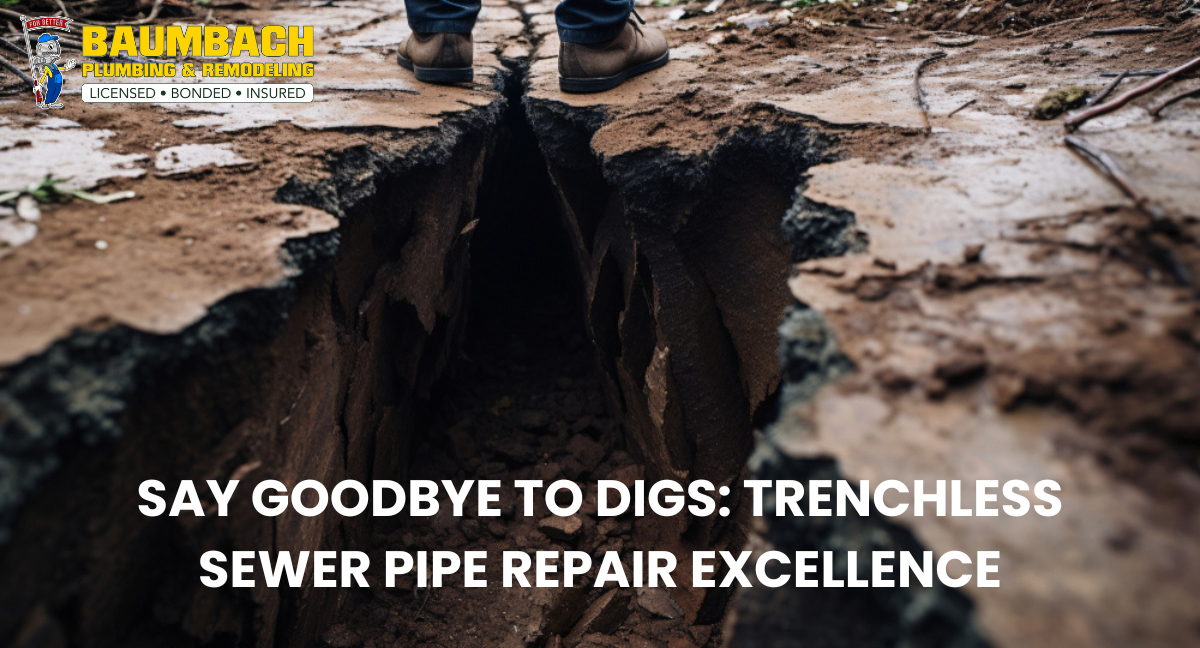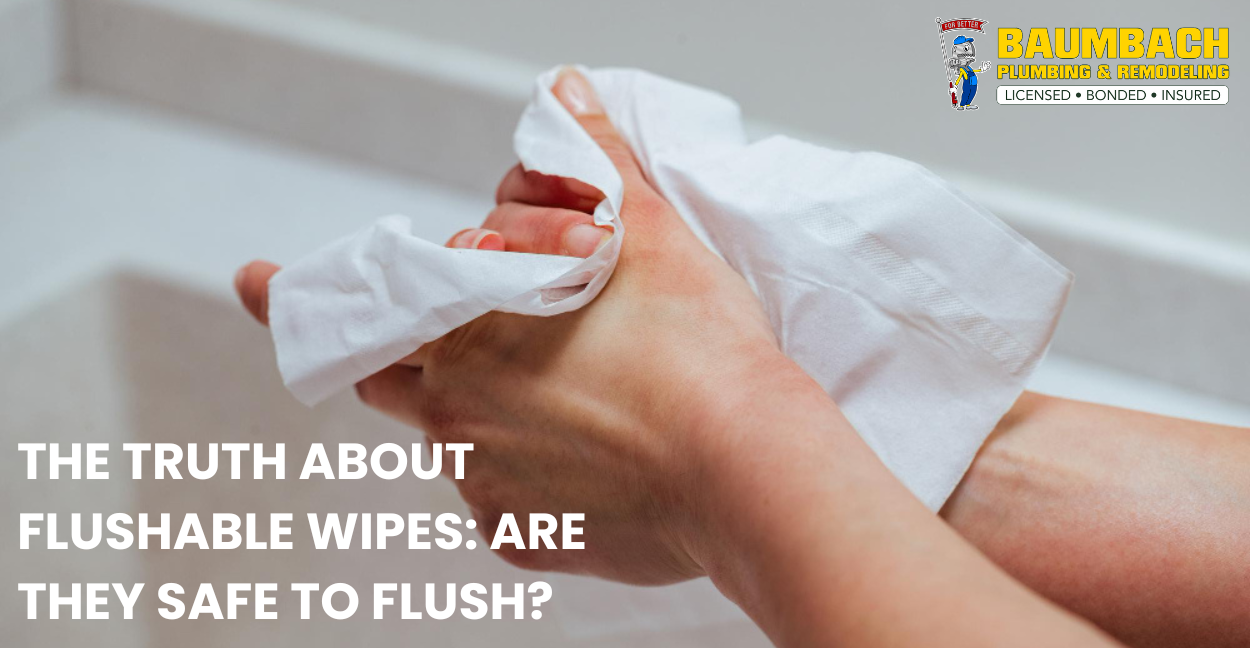Trenchless sewer pipe repair has revolutionized the way we address sewer line issues, offering a modern and efficient alternative to traditional excavation methods. This innovative technique minimizes disruptions, reduces costs, and ensures a quicker resolution to sewer problems. In this article, we will delve into the world of trenchless sewer pipe repair, exploring its benefits, how it works, and how it has become a game-changer in the field of plumbing.
What is Trenchless Sewer Pipe Repair?
Trenchless sewer pipe repair involves fixing or replacing damaged sewer pipes without the need for extensive excavation. Traditional methods often required digging up large portions of the property, causing disruption, inconvenience and added expenses. Trenchless technology provides a less invasive solution that is both efficient and cost-effective.
How Trenchless Sewer Pipe Repair Works
Understanding the process behind trenchless sewer pipe repair helps illuminate its efficiency and advantages.
Pipe Lining (Cured-In-Place Pipe – CIPP):
1.) Inspection
The process begins with a thorough inspection of the sewer pipe using advanced cameras to identify the extent and location of damage, such as cracks, leaks, or corrosion.
2.) Cleaning
Before the lining process, the sewer pipe is cleaned using high-pressure water or mechanical tools to remove debris, scale, and roots, ensuring a smooth surface for the new lining.
3.) Lining Installation
A flexible resin-coated tube, custom-sized to fit the damaged pipe, is inserted through existing access points, such as cleanouts or small excavations. The tube is then inflated and pressed against the interior of the pipe.
4.) Curing
The resin is cured using hot water, steam, or UV light, creating a seamless and durable interior lining that adheres to the existing pipe. This lining effectively covers cracks, leaks, and minor structural issues.
Pipe Bursting
1.) Access Points
The process begins by creating access points, typically at the beginning and end of the damaged pipe at specific intervals.
2.) Bursting Head Insertion
A bursting head, attached to a cable, is inserted into the old pipe. The bursting head breaks apart the existing pipe while simultaneously pulling in a new, high-density polyethylene (HDPE) or other suitable material pipe.
3.) Pipe Replacement
As the bursting head advances through the old pipe, it fractures and displaces the damaged sections, making way for the new pipe. The new pipe is pulled into place, ensuring a smooth, durable replacement.
4.) Connection and Testing
Once the new pipe is in place, connections are made, and the system is thoroughly tested to ensure its integrity and functionality.
Advantages of Trenchless Sewer Pipe Repair
Trenchless sewer pipe repair offers a myriad of benefits that make it an attractive option for homeowners and businesses alike.
Minimal Disruption
One of the most significant advantages of trenchless repair is the minimal disruption it causes to the property. Traditional methods often involve extensive excavation, disrupting landscapes, driveways, and other structures. Trenchless technology eliminates the need for such intrusive digging, preserving the aesthetics and functionality of the property.
Cost-Effective
While initial costs may seem higher than traditional methods, trenchless sewer pipe repair proves to be cost-effective in the long run. The reduced labor, equipment, and restoration expenses contribute to overall savings. Additionally, the quicker completion time means less inconvenience for the property owner.
Faster Repairs
Trenchless repairs are known for their speed and efficiency. Traditional methods could take days or even weeks to complete, causing prolonged inconveniences for residents. Trenchless technology significantly reduces repair time, allowing homeowners to get back to their normal routines sooner.
Environmentally Friendly
The environmentally friendly nature of trenchless sewer pipe repair cannot be overstated. With minimal excavation, there is less disruption to the surrounding ecosystem. The reduced need for heavy machinery also contributes to a smaller carbon footprint, making trenchless technology a sustainable choice for sewer repairs.
Durable and Long-Lasting
Trenchless repairs result in durable and long-lasting solutions. The seamless interior lining created through pipe lining or the installation of new, high-quality pipes in pipe bursting ensures the longevity of the repaired sewer system. This durability translates to fewer future issues and maintenance requirements.
If you want to know more about the other “Sewer Line Repair Options“ then we have also written a detailed article on it where we have explained in detail about different Sewer Line Repair Options along with their pros and cons. So, you can understand it perfectly and make a wise decision about which sewer line repair option is the best.
Applications of Trenchless Sewer Pipe Repair
Trenchless sewer pipe repair is applicable in various situations, making it a versatile solution for a range of sewer system issues.
1.) Residential Properties
Homeowners benefit greatly from trenchless sewer pipe repair, as it allows for efficient and non-intrusive solutions to common sewer problems such as blockages, leaks, and tree root intrusion.
2.) Commercial Establishments
Businesses can also take advantage of trenchless technology to address sewer issues without disrupting daily operations. The speed and efficiency of the repairs minimize downtime and ensure a smooth continuation of business activities.
3.) Municipal Infrastructure
Trenchless sewer pipe repair is increasingly used in municipal projects to repair and upgrade aging sewer systems. The minimal disruption to roads and public spaces makes it a preferred choice for urban planners and local authorities.
Comparing Traditional and Trenchless Methods
Choosing between traditional and trenchless construction methods is a big decision. Traditional methods, used for centuries, involve digging trenches with heavy machinery to install or fix things like pipes or cables. It’s a reliable but disruptive process that can take a lot of time. On the flip side, trenchless methods, like Horizontal Directional Drilling (HDD) or Pipe Bursting, offer a more modern approach. These methods minimize disruption, are faster, and work well in urban areas. However, they may cost more initially because they require special equipment and skilled operators.
The decision on which method to use depends on factors like the project’s size, budget, timeline, and environmental impact. Large projects might stick with traditional methods, while urban projects often prefer trenchless options. Budget matters, and though trenchless methods can cost more at first, they might save money in the long run. Speed is essential, too, with trenchless methods often finishing projects faster due to less disruption. It’s also crucial to consider the environmental impact, where trenchless methods generally have a smaller footprint.
When to Consider Trenchless Repair
We’ll explore the key factors that indicate when it’s time to consider trenchless repair for your plumbing issues. Understanding these signs can help homeowners and businesses make informed decisions and avoid unnecessary disruptions to their properties.
1.) Persistent Plumbing Issues
One of the primary indicators that it’s time to consider trenchless repair is the recurrence of persistent plumbing issues. If you find yourself dealing with frequent sewer backups, slow drains, or unusual gurgling sounds, it might suggest underlying problems within your sewer line. Trenchless repair becomes an attractive option in these scenarios as it allows for a comprehensive inspection and efficient resolution of issues without the need for extensive excavation.
2.) Aging Sewer System
As sewer systems age, they become more susceptible to various issues such as cracks, leaks, and tree root intrusion. If your property has an older sewer system, considering trenchless repair is a proactive approach to address potential problems before they escalate. Trenchless methods like cured-in-place pipe (CIPP) lining can create a durable and seamless interior, effectively restoring the functionality of aging pipes without the disruptive impact of traditional excavation.
3.) Frequent Blockages
Frequent blockages in your plumbing system can be a clear signal that it’s time to explore trenchless repair options. Traditional methods may require digging up large sections of your property to access and fix blockages, causing significant disruption. Trenchless solutions, such as pipe bursting or hydro-jetting, can efficiently clear blockages and reinforce the integrity of the sewer line without the need for extensive excavation.
4.) Property Renovations or Landscaping Plans
If you’re planning property renovations or landscaping projects, it’s an opportune time to consider trenchless repair for your sewer system. Trenchless methods minimize disruption to the landscape, allowing you to carry out your projects without the headaches associated with traditional excavation. This strategic approach ensures that your sewer system is in optimal condition before making changes to your property.
5.) Presence of Mold or Mildew
The presence of mold or mildew in your home can be a sign of water leaks within your walls or foundation, often caused by damaged sewer pipes. Trenchless repair can effectively address these issues by repairing or replacing damaged sections without the need for extensive excavation. This not only eliminates the source of moisture but also prevents further mold or mildew growth.
6.) Cost Considerations
While trenchless repair may have higher upfront costs compared to some traditional methods, it’s essential to consider the overall cost-effectiveness. The reduced labor, equipment, and restoration expenses associated with trenchless methods often outweigh the initial investment. Additionally, the faster completion times associated with trenchless repair contribute to minimizing overall costs, making it a financially prudent choice in many cases.
Environmental Impact of Trenchless Repair
Trenchless repair methods, such as Horizontal Directional Drilling (HDD) and cured-in-place pipe (CIPP) lining, stand out for their ability to mitigate environmental disturbances. Unlike traditional excavation, which involves extensive digging and disruption to landscapes, trenchless repair minimizes surface disturbance, preserving the natural environment. The reduced need for excavation minimizes soil erosion, helping to maintain the integrity of the surrounding ecosystem.
A key environmental advantage of trenchless repair lies in its ability to protect existing vegetation and tree roots. Traditional methods often result in the removal or damage of trees and plants, disrupting the natural habitat. Trenchless techniques, particularly pipe bursting, and HDD, allow for the preservation of trees and greenery as they operate underground without causing disturbance to the surface. This preservation of natural elements is crucial for maintaining biodiversity and ecological balance in urban and suburban areas.
Moreover, the environmental impact of trenchless repair extends to the reduction of greenhouse gas emissions. Traditional excavation involves the use of heavy machinery, contributing to increased carbon emissions. Trenchless methods, on the other hand, require less heavy equipment and, in some cases, none at all. This reduction in machinery usage translates to lower energy consumption and a smaller carbon footprint. As the world places greater emphasis on combatting climate change, the environmentally friendly aspects of trenchless repair make it an attractive choice for environmentally conscious projects.
DIY Trenchless Repair – Myth or Reality?
While the concept of do-it-yourself trenchless repair may sound appealing, it is essential to approach it with caution. Trenchless repair involves specialized equipment, technical knowledge, and experience that are typically beyond the scope of most DIY enthusiasts. The complexity of procedures such as Horizontal Directional Drilling (HDD) or cured-in-place pipe (CIPP) lining requires a level of expertise to ensure successful and reliable outcomes.
Attempting DIY trenchless repair without the necessary skills and equipment can lead to unintended consequences, including damage to existing pipes, incomplete repairs, or even environmental hazards. Trenchless methods demand precision and adherence to safety protocols, which are best handled by trained professionals. Moreover, local regulations and permits may be required for trenchless repair projects, and professionals are well-versed in navigating these legal requirements.
Ready to Transform Your Sewer Line? Contact Us Today!
Are you tired of dealing with sewer line issues? Our expert team is ready to transform your sewer system with efficient and reliable solutions. Call us now at Fairfax: 703-250-4200 or Arlington: 703-524-1250 for a consultation, and let’s get started on ensuring your pipes are in top-notch condition. Here’s a glimpse of the diverse plumbing services we offer: Drain Cleaning Services, Toilet Repair & Replacement, Burst Pipe Repair, Gas Line Repair & Replacement, Residential Water Treatment, Backflow Testing Services, and much more.
Frequently Asked Questions
1.) Is trenchless sewer repair worth it?
Absolutely, trenchless sewer repair is often considered worth it for several reasons. Firstly, it minimizes disruption to your property and surroundings compared to traditional excavation methods. Trenchless repair techniques like pipe lining and pipe bursting are less invasive, preserving landscaping and structures. Additionally, the process is usually quicker, reducing the overall project timeline. This method is particularly beneficial for homeowners who want to avoid the hassle of extensive excavation and the associated costs of restoring their property post-repair. While upfront costs may be slightly higher, the long-term benefits in terms of convenience and reduced environmental impact often make trenchless sewer repair a worthwhile investment.
2.) What are the disadvantages of trenchless pipe lining?
While trenchless pipe lining has numerous advantages, it’s essential to be aware of potential disadvantages. One drawback is the diameter reduction of the existing pipe due to the insertion of the lining material. This reduction, though minimal, may affect the flow capacity of the pipe. Additionally, if the existing pipe has multiple bends or sharp angles, the lining process might face challenges in navigating these turns effectively. The success of trenchless pipe lining also relies on the structural integrity of the original pipe; if it’s severely damaged or collapsed, other trenchless methods may be more suitable. Lastly, the initial cost of trenchless pipe lining can be higher than traditional methods, although the long-term benefits often outweigh this drawback.
3.) What is the most common material used for trenchless repair?
One of the most common materials used for trenchless repair is cured-in-place pipe (CIPP). CIPP involves inserting a resin-saturated liner into the existing pipe, and once in place, the resin is cured, creating a durable, seamless “pipe within a pipe.” This method is versatile and can be applied to various pipe materials, including clay, concrete, PVC, and cast iron. The flexibility of CIPP makes it a popular choice for rehabilitating existing sewer lines without the need for extensive excavation. Other materials, such as high-density polyethylene (HDPE) used in pipe bursting, are also common in trenchless repair, offering different solutions based on the specific needs of the project.
4.) Why is trenchless pipe a good alternative to pipe replacement?
Trenchless pipe repair is a compelling alternative to pipe replacement for several reasons. Firstly, it avoids the need for extensive excavation, minimizing disruption to landscapes, driveways, and structures. This preservation of the existing surroundings is particularly advantageous in residential areas. Trenchless methods also tend to be faster, reducing the overall project timeline. Additionally, the cost savings associated with less labor and minimal restoration expenses make trenchless repair an attractive option. The ability to rehabilitate or replace pipes without digging up the entire length of the line is a key factor in choosing trenchless methods over traditional pipe replacement.
5.) Is trenchless sewer repair cheaper?
While the upfront costs of trenchless sewer repair may be higher compared to traditional methods, the overall expense can be more cost-effective in the long run. Trenchless repair minimizes the need for extensive excavation, reducing labor costs and the expenses associated with restoring landscapes and structures. The quicker completion time of trenchless methods can also lead to cost savings. Additionally, the preservation of existing infrastructure and landscaping prevents the need for costly rebuilding or landscaping post-repair. Therefore, despite the initial higher investment, many find trenchless sewer repair to be a financially sensible choice when considering the comprehensive project costs and long-term benefits.






